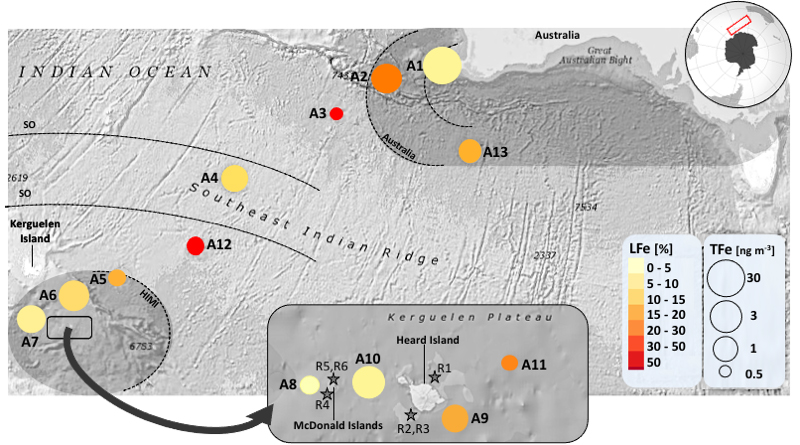Volcanic emissions in the Southern Ocean: an efficient and unexpected source of iron for this remote area
Southern Ocean marine productivity participates in regulating the global climate through mitigating atmospheric CO2 content. The Heard and McDonald Islands (HIMI) are two volcanically-active islands on the Northern Kerguelen plateau, in the Southern Indian ocean. There, seasonal blooms of phytoplankton evidence local iron (Fe) supply mechanisms to seawater which remain poorly understood. Perron and her colleagues (2021, see reference below) revealed increased atmospheric Fe loadings (average TFe = 1.8 ng m-3), more than twice the Southern Ocean aerosol concentrations, in the vicinity and up to 500 km downwind from HIMI. Such high aerosol Fe concentrations were associated with volcanic emissions on Heard Island, as evidenced by similar atmospheric signature in aerosols compared to igneous rocks from the island’s volcano Big Ben. Interestingly, this freshly emitted Fe was more soluble than what is commonly observed in the mineral aerosols. Volcanic emission can therefore represent a significant source of bioavailable Fe to open ocean anaemic ecosystems. Such source is currently poorly or unaccounted for in biogeochemical models, likely causing models to underestimate marine productivity over the Southern ocean and its feedbacks on climate.

Reference:
Perron, M. M. G., Proemse, B. C., Strzelec, M., Gault-Ringold, M., & Bowie, A. R. (2021). Atmospheric inputs of volcanic iron around Heard and McDonald Islands, Southern ocean. Environmental Science: Atmospheres. Access the paper: https://doi.org/10.1039/D1EA00054C
